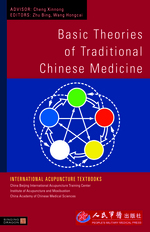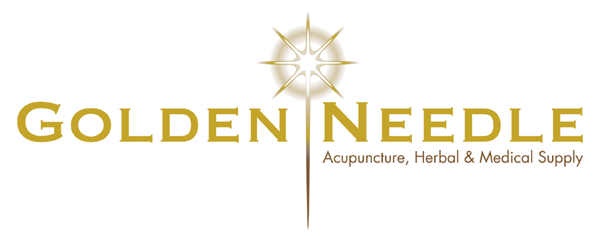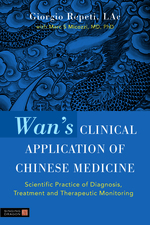$0.00 (0 items)
Basic Theories of Traditional Chinese Medicine

Basic Theories of Traditional Chinese Medicine
| SKU | SD156 | |
| Brand | Singing Dragon | |
| Unit Size | 246mm x 173mm / 10in x 7in, 192pp | |
| Properties | 2010, paperback, ISBN: 978-1-84819-038-2 | |
| English name | Basic Theories of Traditional Chinese Medicine | |
| Description | Basic Theories of Traditional Chinese Medicine
Edited by Zhu Bing and Wang Hongcai Advisor: Cheng Xinnong Traditional Chinese medicine has a long and complex history, yet the basic principles at the heart of practice have remained the same for hundreds of years. Without a solid understanding of these fundamental theories, effective practice is impossible, and this book provides a complete introduction to everything that students and practitioners, both new and experienced, need to know. The book describes and explains all of the fundamental principles of Traditional Chinese Medicine, including yin/yang, the five elements, the 'zang and fu' organs, Zang Xiang, Qi, and the meridians and collaterals of the body. Explaining not only the principles upon which these elements work, but also how they interrelate, the book describes how they can be used in practice to identify, treat and prevent ill-health and disease. This thorough and accessible textbook, compiled by the China Beijing International Acupuncture Training Center (CBIATC), under the editorial directorship of leading Chinese clinicians Zhu Bing and Wang Hongcai, is essential reading for students of traditional Chinese medicine, and is also a useful basic reference for TCM practitioners. Contents Introduction. The Formation and Development of TCM. Formation of the theoretical systems of TCM. Development of the theoretical systems of TCM. The Basic Characteristics of TCM. The holistic concept. Treatment based on differentiation of syndromes. 1. The Theories of Yin-Yang and Five Elements. The Theory of Yin and Yang. The concept and characteristics of yin-yang. Category of yin-yang attribution. Basic content of yin-yang. The Application of the theory of yin-yang in TCM. The Theory of the Five Elements. Basic concept of the five elements (Wu Xing). Main content of the five elements. Application of five elements in Chinese medicine. 2. The Theory of Zang-Fu Organs. Brief Introduction. Basic conception of Zang Xiang theory. Common physiological characteristics of Zang Xiang. Formation of Zang Xiang theory. Main characteristics of Zang Xiang theory. Difference between "zang-fu" and "visceral organ". Five Zang Organs. The heart. The lung. The Spleen. Liver. Kidney. Six Fu Organs. Gallbladder. Stomach. Small Intestine. Large Intestine. Urinary Bladder. Triple Energizer. The Extra Fu Organs. Brain. Uterus. The Relationships Among the Zang and Fu Organs. The relationships between the zang organs. The relationship between the fu organs. The relationship among Zang-Fu organs. 3. Qi, Blood and Body Fluid. Qi. The concept of qi. The formation of qi. The physiological function of qi. The movements of qi and the forms of movements. Distribution and classification of qi. Blood. The concept of Blood. Formation of Blood. The Functions of Blood. The circulation of blood. Body Fluids. The concept of body fluids. The formation, distribution and secretion of the body fluids. The function of the body fluids. The Relations Among the Qi, Blood and Body Fluids. The relationship between qi and blood. The relationship between qi and body fluids. The relationship between blood and body fluids. 4. Meridians and Collaterals. Brief Introduction. The Concept of the Meridians and Collaterals & Their Composition. The concept of the meridians and collaterals. Composition of the meridians and collaterals. Functions of the meridians and collaterals. The Twelve Main Meridians. Nomenclature of the twelve main meridians. The regulation of the running courses and cyclical flow of qi. Distribution. Cyclical flow of qi in the twelve main meridians. Exterior - interior relationship. The courses of the twelve main meridians. The Eight Extra Meridians. Concept. Function. The Governor Vessel. The Conception Vessel. The Thoroughfare Vessel. The Belt Vessel. The Yin Heel and Yang Heel Vessels. The Yin Link and Yang Link Vessels. The Divergent Meridians, Collaterals, Muscle Regions and Cutaneous Regions. Concept, running course and function of the divergent meridians. Concept and function of collaterals. Concept and function of the muscle regions. Concept and Function of the Cutaneous Regions. 5. Etiology and Occurrence of Diseases. Introduction. Etiology. Concept and Classification of etiology. Concept of six exogenous factors and their characteristics in causing diseases. Six exogenous factors. Pestilence. Seven emotional factors. Irregular food intake, over - strain and stress or lack of physical exercise. Traumatic injuries. Stagnation of phlegm or blood. Principle for the Onset of Diseases. Basic principle for the onset of diseases. Environment and onset of diseases. 6. Pathogenesis. Prosperity and decline of pathogenic qi and anti-pathogenic qi. Prosperity and decline of pathogenic qi and anti-pathogenic qi. Transformation of the disease. Disharmony of yin-yang. Concept. Excess of yin-yang. Deficiency of yin-yang. Mutual consumption if yin and yang. Yin or yang kept externally. Collapse of yin and collapse of yang. Dysfunction of qi and blood. Deficiency of qi. Disturbed qi activity. Deficiency of blood. Stagnation of blood. Heat in blood. Dysfunction of qi and blood. Disorder of body fluid metabolism. Insufficient body fluid. Disturbance in distributing and excreting of body fluid. Relationship between qi, blood and body fluid. Interior pathogenic factors. Stirring up of interior wind. Production of interior cold. Production of interior damp. Dryness due to over-consumption of body fluid. Generation of interior fire. Pathogenesis according to meridians and collaterals. 7. Prevention of Diseases and Principles of Treatment. Prevention. Concept and principles of treatment. Principles of treatment. Setting up the principles of treatment. Application of the principles of treatment. Reviews 'the simple descriptions of these ideas are very helpful to a novice and would underpin a much more advanced study of TCM syndromes.' - The JAACP (The Journal of the Acupuncture Association of Chartered Physiotherapists) 'Combining practical instruction with detailed theory, this authoritative textbook, complied by the China Beijing International Acupuncture Training Center (CBIATC), under the editorial direction of leading Chinese clinicians Zhu Bing and Wang Hongcai, is an excellent reference for students and practitioners at all levels... Although modest in size, these texts are packed with information... in terms of portability and cost... they make themselves serious contenders for the college bags of students of Chinese medicine... In terms of visual presentation, other than the obligatory yin-yang and five-phase diagrams, assistance is limited to a few flow diagrams, which may disappoint more visually-orientated learners. This drawback is largely compensated for by the consistent use of clear tables that facilitate both learning and quick reference. Despite the drawback of the simplification inherent in such texts, some of the chapters are excellent. The chapter on emotions and elements in Basic Theories, for example, is particularly good, as is the chapter on bianzheng in the Diagnostic volume. The chapters on pulse and tongue are also well-written, and designed for quick navigation to allow mere seconds to access, for example, the description and significance of a tense pulse or a grey tongue coating. As such... These texts offer simple, portable, concise and well-structured information that is consistent with the TCM literature already available. On occasion, refreshingly original insights come from the teaching experience of the authors. Whilst this series does not necessarily offer an educational panacea, it may just offer what is missing on the market - an affordable, accurate and accessible series of texts written specifically for a Western mindset and understanding. If the rest of this series of text books are as good as the two reviewed here (Diagnostic of Chinese Medicine and Basic Theories of Chinese Medicine), Singing Dragon Textbooks will definitely become part of the recommended reading of Chinese medicine courses; student in the early stages of their TCM studies o those that require a fresh angle or portable material for revision should certainly consider buying them.' - Journal of Chinese Medicine, Greg Meier 'Although the lucidity of this textbook would have been even more leveraged in the first few years of my OM studies, I find its clarity of context heady refreshment as I am approaching the end of my third decade of practice.' - Frank Yurasek Ph. D (China), MSOM, MA, LAc, Oriental Medicine Journal Author information Zhu Bing teaches at the China Beijing International Acupuncture Training Center (CBIATC), an organisation founded in 1975 at the request of the World Health Organisation. CBIATC has a prestigious reputation as one of the world's leading training organisations in Traditional Chinese Medicine. Wang Hongcai teaches at the China Beijing International Acupuncture Training Center (CBIATC), an organisation founded in 1975 at the request of the World Health Organisation. CBIATC has a prestigious reputation as one of the world's leading training organisations in Traditional Chinese Medicine. |
|
| Ingredients | Basic Theories of Traditional Chinese Medicine |
|


